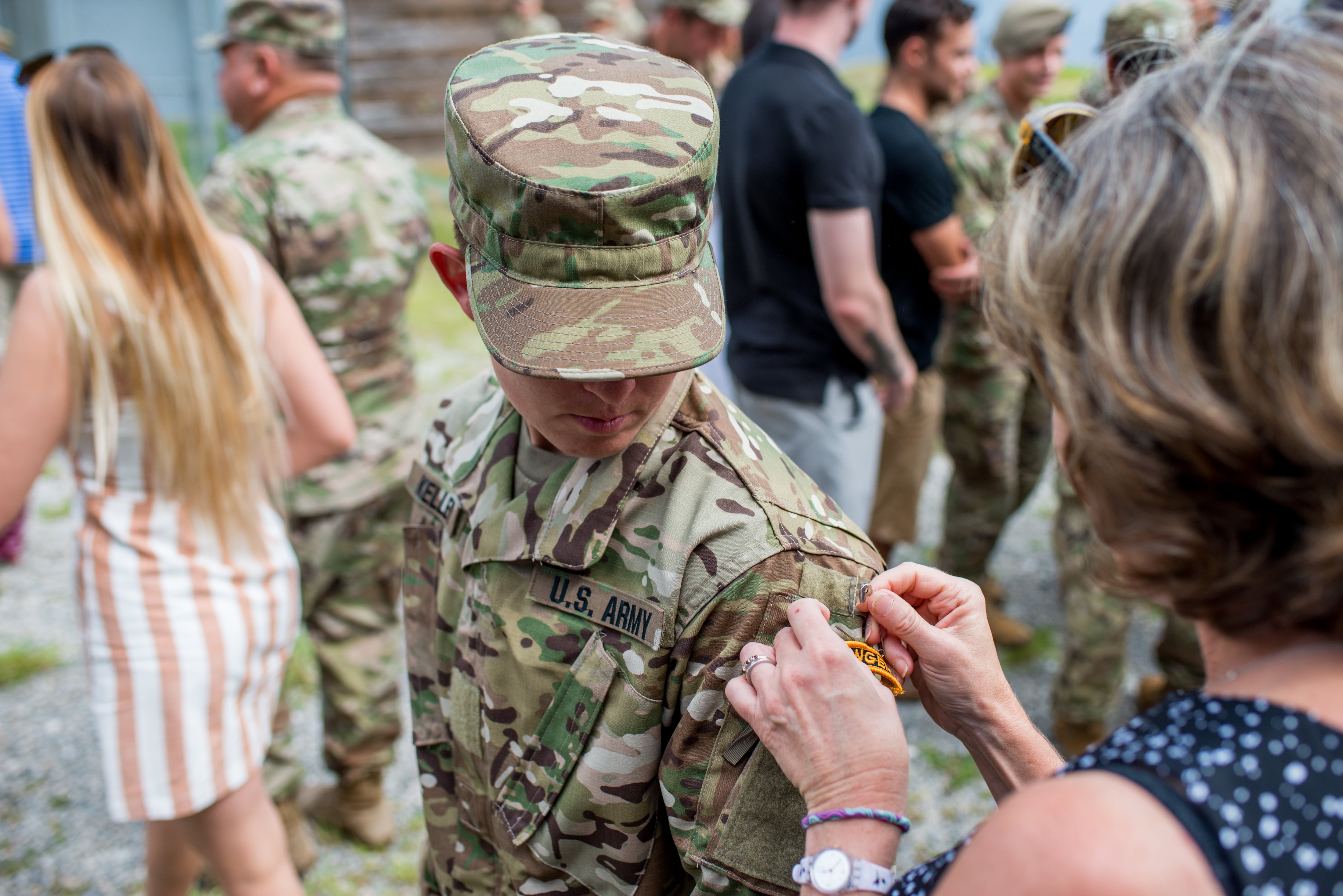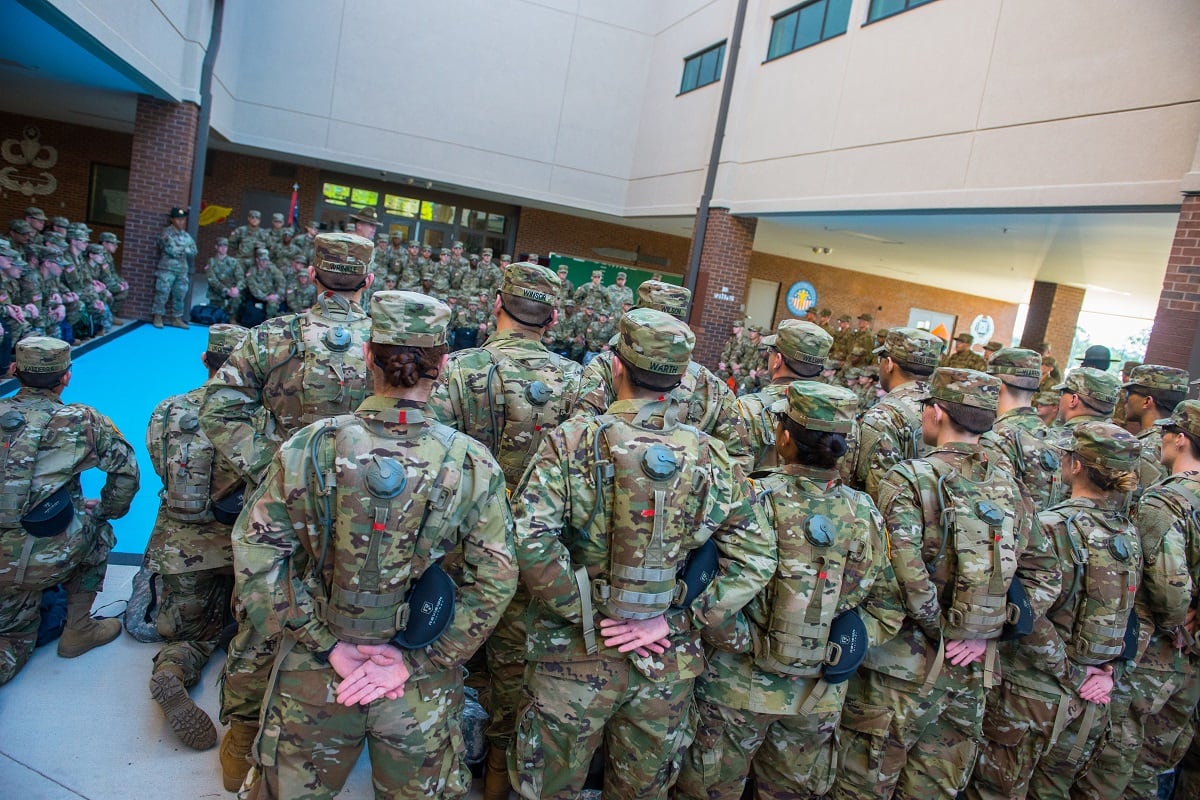Soldiers of all genders will be allowed to have highlights that blend with uniform colors; women can wear long ponytails during training or even shave their heads if they want; men can wear clear nail polish; and terminology that some may find offensive — such as Mohawk, Fu Manchu and dreadlocks — will be removed from Army regulations
Those changes, and more, are slated to come into effect Feb. 26, Army officials said Tuesday, giving the service time to create imagery and memorandums to help solders and command teams understand the new guidelines.
The changes are the work of a 17-soldier panel established to promote diversity and inclusion, according to the service. Suggestions were proposed by troops and voted on by panel members, who came from commands across the force. The panel was made up of 10 Black women, four white women, one Hispanic woman, one Hispanic man and one Black man.
Revised hair and grooming regulations will likely be welcomed by female soldiers who’ve long dealt with stringent requirements, such as tight hair buns that can damage their scalps. But service leaders aren’t ignorant to the reality that the changes will likely be derided by others as “politically correct” maneuvering by the Army.
“Some people don’t like change but that’s just how the world is,” said Sergeant Major of the Army Michael Grinston during a call with reporters. “It changes over time and we need to change with it. I’m not going to go into who voted and who said what, but this panel represented our force from all walks of life, and we brought in experts,” like dermatologists and psychologists.
“These things are always going to be hard, and that’s why it was really important for me to get the panel right and trust that they would represent the Army to look at things appropriately, and I think they did,” Grinston added.

One of the panel members was a female officer who graduated Ranger School. Her inclusion helped create the new rule authorizing buzz cuts for women.
“When female soldiers go through training, such as Special Forces or Ranger, they shave their heads … and when they come out of the course, they’re out of regulation,” said Sgt. Maj. Brian Sanders, the Army’s top enlisted soldier for uniform policy. “As of right now, the current standard does not allow female soldiers to have their hair lower than a quarter of an inch.”
Ultimately, the panel agreed to change that regulation. It will no longer tell women what length of hair they must have. But not every decision was quickly sorted out by the panel.
The policy for wearing long pony tails “was the only time, out of all of [the policies], where the panel was a little bit split,” Sanders said. The panel agreed to authorize the long pony tail only under specific circumstances, such as physical training and tactical operations.
Most of the changes are designed with practicality in mind, Sanders noted. Wearing a long pony tail rather than a bun, for instance, will help women in the field with helmets.
“Wearing a bun is not very functional when you’re wearing a helmet,” Sanders said. “If you’ve seen some pictures of some of our female soldiers out there with this helmet on, the helmet tends to lean forward onto the top of their eyebrows, which can impair vision.”

The changes authorize women to wear earrings in their Army combat uniforms, except in field environments where access to hygiene is limited.
Women can also wear lipsticks that aren’t “extreme” shades, such as blue, gold or hot pink, according to the revised regulations. Nail polish is allowed with similar limits on “extreme” colors. Men can wear clear nail polish now, too, a move that Sanders said will allow male soldiers who work with chemicals to protect their nails.
Still, many of the changes are geared towards women, and that’s intentional.
“At the end of the day, our women are mothers, spouses and sisters,” Sanders said. “They definitely want to maintain their identity and this is one way to get after it.”
Lt. Gen. Gary Brito, the Army’s deputy chief of staff for personnel issues, said the changes will better reflect the cultural and gender demographics within the service.
“We have soldiers from all walks of life, all 50 states plus the territories, and we have to represent them,” Brito said Tuesday. “Inclusive grooming standards help to foster our ability to recruit and retain the best talent, whether that’s a new private or an officer coming in.”
Offensive terms will be replaced with alternative words. Dreadlocks, for instance, has ties to the American slavery experience, and will be replaced with “locs,” primer slides shared with reporters read.
Other language used in grooming standards will also be revised. At the ”discretion of the commander” and “professional” are too subjective, the primer slides stated. Those phrases will be replaced with more precise terms, “visual representations, color swatches, and familiarity of hair styles and textures,” the slides added.
Some of the incoming changes will be reflected in a revised version of Army Regulation 670-1 that will be issued in February. Other changes will not be included in the revised regulation, but will be disseminated through memorandums and official guidance in the coming month.
Kyle Rempfer was an editor and reporter who has covered combat operations, criminal cases, foreign military assistance and training accidents. Before entering journalism, Kyle served in U.S. Air Force Special Tactics and deployed in 2014 to Paktika Province, Afghanistan, and Baghdad, Iraq.





